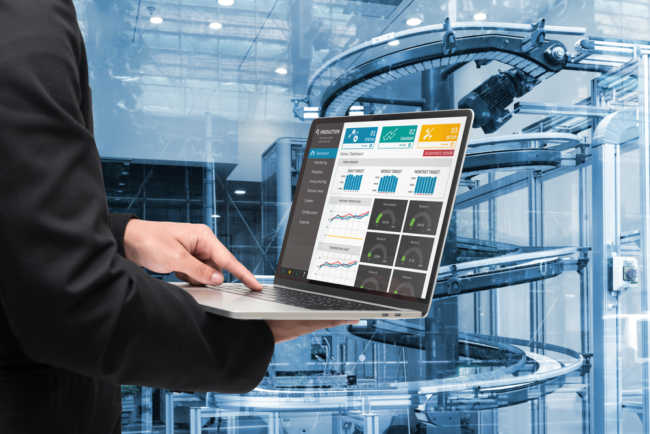Implementing Predictive Analytics Outside the Factory Floor
A growing number of manufacturers, particularly those with large global footprints and complicated supply chains, have realized the power of predictive analytics. However, many are not taking advantage of this technology for larger, strategic decisions.
Some manufacturers are using predictive analytics to improve production line productivity, combining industrial IoT, cloud and analytics technologies to predict machine failure. Others are using predictive analytics to improve quality control by using automated sensors to detect the smallest of flaws.
Where predictive analytics offers manufacturers the highest ROI, though, is not analyzing processes inside the factory – but rather in analyzing the world’s influence on company performance.
Manufacturers using predictive analytics to accurately forecast demand — using internal and external data — are poised to make improved strategic decisions, gain greater visibility into their supply chains, plan better for market disruptions and know where best to invest their marketing dollars. Other clear, fast ways manufacturers can capitalize on data analytics can be found in our previous article.
Accurate Demand Forecasts Lead to Better Business Outcomes
Using predictive analytics and external data, companies can develop fact-based demand plans and gain insight into upcoming headwinds and tailwinds. This can also reduce the bias during a consensus forecasting process.
Traditional forecast methods often rely exclusively on trend analysis of historical data. This does not take into account changes in global markets, changes in consumer demand, or regional economies. Often, a manufacturer’s forecast is highly dependent on their largest customer’s plans. Getting this incorrect can have ripple effects through the supply chain, resulting in excess inventory and reduced margins.
Bottom line: If demand estimates are off, companies are effectively operating in the dark. No wonder only one-third of CEOs have a high-level of trust in the accuracy of their data analytics, according to KPMG.
Predictive Analytics Improves Business Planning
For large global manufacturers with multiple product lines or products that serve diverse end-use industries, forecasting can be an extremely time consuming and frustrating process. It may take analysts months to compile estimates, only to discover they failed to account for an internal or external factor that spoiled their results.
In contrast, predictive analytics can greatly improve the speed of market analysis. Using predictive analytics software, what would take teams months to analyze can often be cut down to weeks or days. Some manufacturers that have adopted predictive analytics into their forecasting processes have reduced their planning times by more than 20 percent.
The models created in these processes can quickly review years of sales data, inventory volume and costs across product lines and geographies to find new insights. Companies can get granular with the data and develop dozens of predictive models to map “what-if” scenarios. In this way, they can develop contingency plans for outside events and compare the potential effectiveness of regional marketing campaigns.
Predictive analytics can also be used to identify operational issues. No matter how well companies plan, the global economy can throw unexpected curveballs to manufacturers by introducing supply chain disruptions and volatility that can wildly throw off estimates. With the help of predictive analytics, however, manufacturers can gain greater visibility into their supply chains and plan accordingly – often 12 months in advance.
A Common Baseline Across Departments
Some manufacturers may be reluctant to change their time-honored processes. They may think that their current techniques are “as good as they will ever get.” Often, teams think they lack the organization, resources and manpower to implement predictive analytics into their planning and production processes.
Those that overcome these barriers are recognizing that implementing predictive analytics into manufacturing can add more value than any other activity. Advanced predictive modeling offers a real-time view of market conditions and tells companies when they may require a shift in strategy or tactics.
Third-party predictive analytics solutions are particularly helpful because they can provide a reliable, unbiased baseline that all departments can reference. Now finance, marketing, sales and operations managers can all work for the same numbers and, most importantly, trust their accuracy when making decisions.
All in all, business leaders must now look beyond the factory floor and into their planning processes when considering how to use predictive analytics to reduce costs and streamline operations. Only then will they see the biggest value.
This article was written by Rich Wagner, the president and chief executive officer of Prevedere. He helps industry-leading companies to look beyond their own walls for key external drivers of financial performance. He has uniquely positioned Prevedere as a complementary solution to existing forecasting platforms by tying the right external economic factors to corporate performance.



